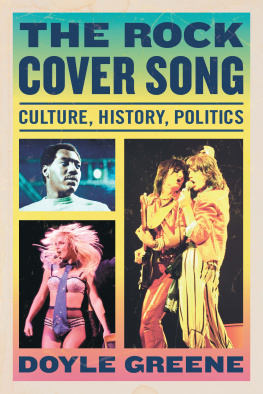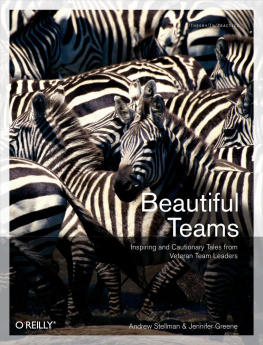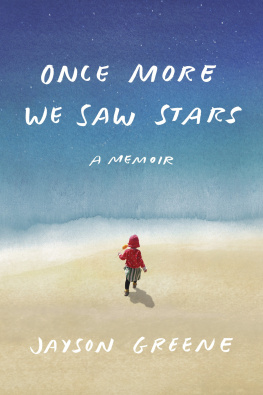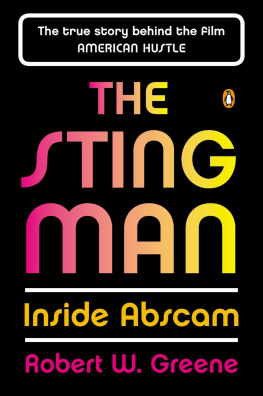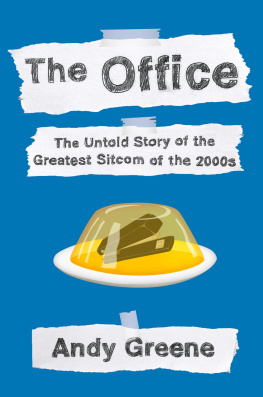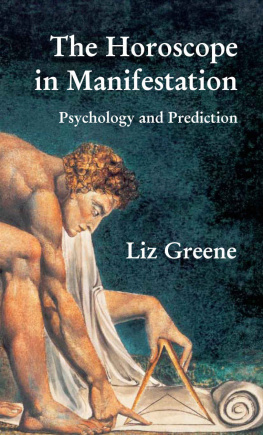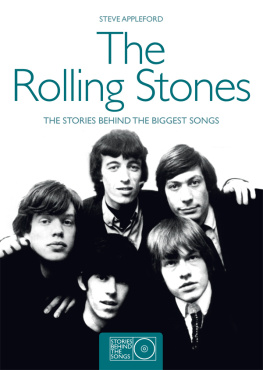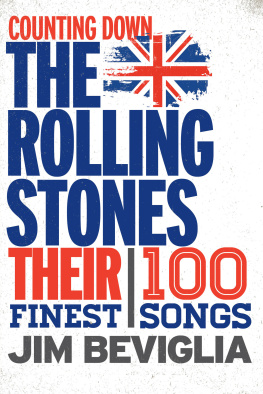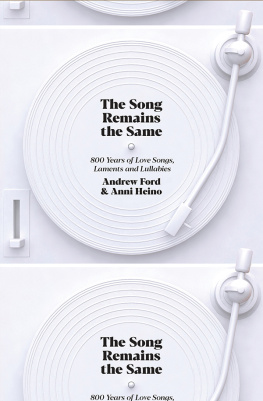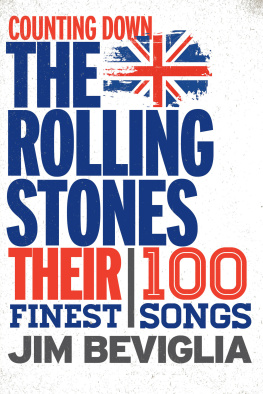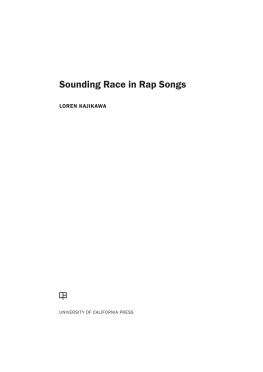
Also by Doyle Greene and from McFarland
Teens, TV and Tunes: The Manufacturing of American Adolescent Culture (2012)
The American Worker on Film: A Critical History, 19091999 (2010)
Politics and the American Television Comedy: A Critical Survey from I Love Lucy through South Park (2008)
The Mexican Cinema of Darkness: A Critical Study of Six Landmark Horror and Exploitation Films, 19691988 (2007)
Mexploitation Cinema: A Critical History of Mexican Vampire, Wrestler, Ape-Man and Similar Films, 19571977 (2005)
The Rock Cover Song
Culture, History, Politics
Doyle Greene

McFarland & Company, Inc., Publishers
Jefferson, North Carolina
For Richard Leppert,
who not only provided the idea for this project
but graciously gave me permission to cover it.
Acknowledgments
My thanks to the Greene family (Earl, Hannah, and Danielle), the Lynch family (Rodney, Jeni, and Jack), Ann Klee, Matt Potts, Donn Wingate, Keya Ganguly, Gary C. Thomas, Steve Fier and Phanomvanh Daoheuang (Nacho and Nikki), Joe Tompkins and Julie Wilson, John Ray Link and Sophia Green, and especially Richard Leppert for advice, comments, and support. A thanks also to the numerous musicians I had the privilege to work with and/or discuss music with over the course of three-plus decades. Additional thanks are owed to the departments of Cultural Studies and Comparative Literature, Political Science, and History, and the Master of Liberal Studies Program at the University of Minnesota, as well as the departments of Cinema and Comparative Literature and Rhetoric at the University of Iowa.
Last, a big thanks to my late parents for their lifetime of support and patiently enduring untold hours of my stereo, MTV, and playing musical instruments.
Preface
It seems that any critical discussion of popular music begins with some kind of autobiographical account, and this is no exception in order to provide some context for this project and put forth some of my own musical biases. Thanks to my older brother giving me unrestricted access to his stereo and record collection, by the time I turned 13 in the summer of 1975 I was a dedicated rock music fan. For better or worse, the first two albums that made a considerable impact were Emerson, Lake and Palmers Trilogy and Jethro Tulls Thick as a Brick; I soon after became a devout Black Sabbath fan after seeing them on Don Kirshners Rock Concert. As for the classic rock albums of the 1970s, Led Zeppelin IV, Bruce Springsteens Born to Run, and Pink Floyds Dark Side of the Moon had some great songs interspersed with less memorable moments.
During the latter half of the 1970s, my band/brand identity and loyalty became constructed around art rock, and the artier the better. I can safely assume I was the only person in my high school who owned every Van der Graaf Generator album and no Van Halen. One purchase was June 1, 1974, a live album featuring Brian Eno, John Cale, Nico and Kevin Ayers. I bought it because I was a big fan of Enos album Here Come the Warm Jets, but the revelation was two startling anti-covers. John Cale reworked Elvis Presleys Heartbreak Hotel from smoldering rockabilly melodrama into angst-ridden, avant-gospel-metal psychodrama. (The fact that Cale learned Ayers and Cales then-wife had sex the night before the concert may well have contributed to Cales extremely intense vocals.) Nico performed The End in her trademark Teutonic vocal style accompanied by her minimalist harmonium drones and Enos ambient synthesizer noises. The Doors psychedelic account of Oedipal desire and revolt in the context of the counterculture and the Generation Gapkilling dad and having sex with momwas converted into a bleak, Gothic dirge where transgression amounted to a dreary, numbing stasis. In his essay Commitment, Theodor W. Adorno suggested that Beckett and Kafka arouse the fear that existentialism merely talks about. While I would have hardly put it this way as a teenager listening to June 1, 1974, John Cale and Nico aroused the fear that Elvis and Jim Morrison merely sang about within the same song. It was the first time that I heard rock songs being covered in a way that not only radically reinterpreted the original versions musically but drastically altered my relationship to the songs as a listener. In short, I could never listen to Elvis and the Doors versions of the songs in the same way again.
When punk reared its ugly head ca. 1976, the controversy dominated the critical and media discourses at the time, even though it was completely absent from the local radio stations. Being an art-rock snob, I held punk in derision. However, by 1978 I was gradually losing interest in progressive rock as my favorite bands had broken up (King Crimson, Henry Cow, Van der Graaf Generator) and others were moving in more commercial directions (Can, Genesis, Gentle Giant). My overnight conversion to punk occurred on October 14, 1978, when I saw Devo on Saturday Night Live. All I really knew about Devo was that Eno produced their debut album, which intrigued me enough to make a point of watching the show. While the matching yellow plastic jumpsuits, robotic stage choreography, and cheap guitars made an immediate visual impact, I could hear the influence of Captain Beefheart and Krautrock amid Devos brand of punk rock. It wasnt until Mark Mothersbaugh began yelping the lyrics that I even realized the jumbled, mechanistic tune I was hearing was a cover of the Rolling Stones (I Cant Get No) Satisfaction. I thought it was hilarious and innovative, but I also discerned a political motive behind Devos determined desecration of the Rolling Stones and a classic rock song.
Given my art-rock leanings and becoming a punk fan well into the post-punk era, I gravitated to the Gang of Four, Pere Ubu, the Pop Group, and Wire much more than the Sex Pistols, the Ramones, the Clash, and the Dead Boys. As hardcore punk emerged in the early 1980s, my art-rock side embraced the Minutemen, Sonic Youth, and the Swans while my heavy metal side took to Black Flag, Bad Brains, and Die Kreuzen. I also became engrossed by free jazz, industrial music, and the work of John Cage. Over the course of the decade, I played bass, saxophone, and sang (read: shouted) in a number of local post-punk and post-hardcore influenced bands. During the 1990s, I worked with a number of musicians influenced by other musical genres, and in order to broaden my musical horizons, I delved into contemporary heavy metal, modern classical, the Motown heyday, and nonWestern music.
Entering graduate school in the late 1990s prompted a decision to retire from performing music. My focus at the time was film studies and I began paying less and less attention to current popular music. Not unrelated, the advent of CDs entailed a huge amount of reissues and I increasingly retreated to the security of my cultural bunker of the 1970s. I adopted the attitude that with few exceptions, music after 1980 was a waste of listening time. By 2006, I sold off the vast majority of a collection that probably numbered between 1,500 and 2,000 CDs, save my personal canon of 1970s art rock, hard rock, and post-punk. The current state of American and English popular music was not a concern, and the few contemporary bands that did interest me ranged from the Mexican msica duangunese of Los Horscopos de Durango to the Swedish math-metal of Meshuggah.
Next page
